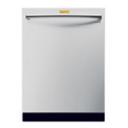A new washing machine can not only be a big investment, if it’s not used properly, it can have the power to cause great damage with floods of water. We’ve gathered some helpful tips for washer usage here:
If you found these useful you can read more at appliance411


 The Association of Home Appliance Manufacturers
The Association of Home Appliance Manufacturers